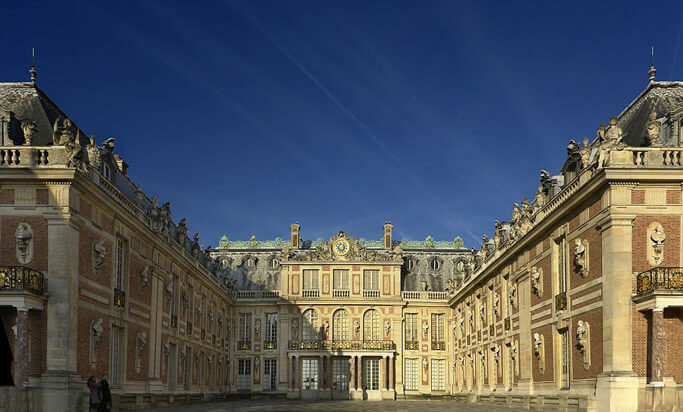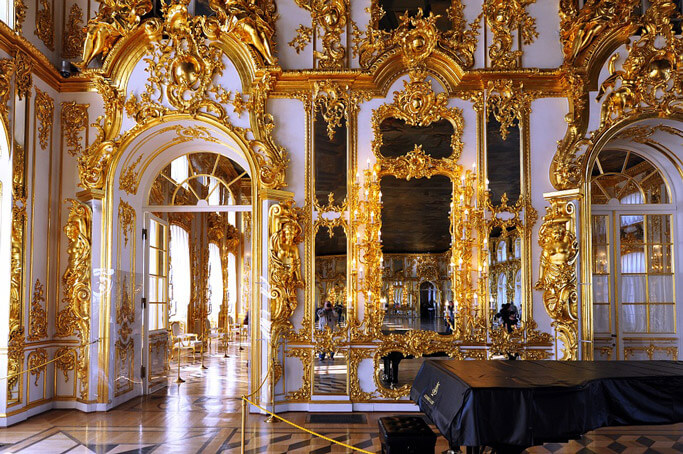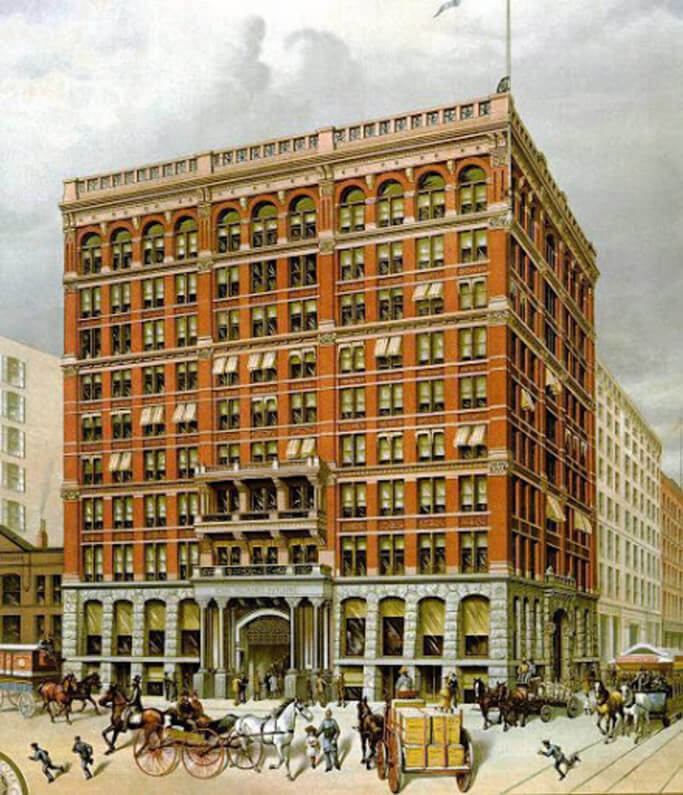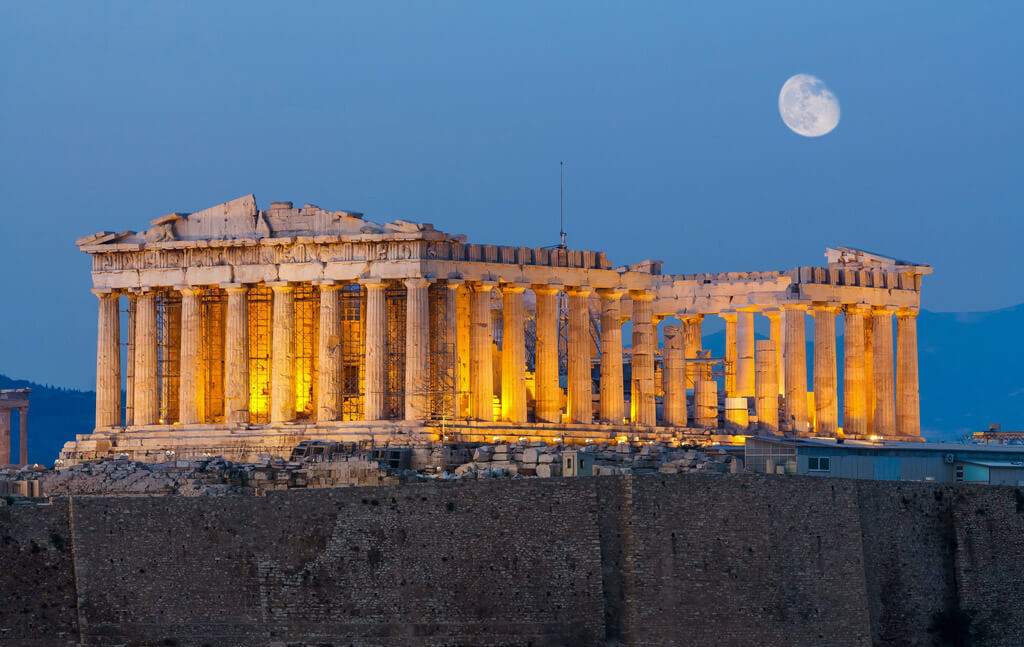Architectural history timeline. Periods of architecture and most important architectural styles. Here is a summary of a global history of architecture from prehistory to the present.
Architecture is a silent record of the culture that produced it. Architectural structures, which are the most important sign of civilization, are symbols of social values and beliefs. In order to know any period or culture, it is necessary to understand the history and art of that period. Architecture is a form of nonverbal communication where history and art meet.
Although architectural experience is largely based on physical and aesthetic pleasure, to truly experience a building requires knowledge of its structure, history and meaning. In this article, we have explained the development process of architectural structures from single-storey wooden hut to steel towers as a result of the ideas and construction techniques developed over the centuries and ages. Here are the architectural history from prehistory to the present and most important architectural styles…

Great nations write their autobiographies in three manuscripts, the book of their deeds, the book of their words and the book of their art. Not one of these books can be understood unless we read the two others, but of the three the only trustworthy one is the last.
John Ruskin
Contents
Prehistoric Architecture (11,600 BCE – 3,500 BCE)

The architectural history dates back to the neolithic era. In prehistory, people began to create the first architectural products for their settled communities. The oldest known architectural structure in the world is Göbekli Tepe in Şanlı Urfa, Turkey. (c. 11,600 BCE). While buildings with walls made of wood and branches and plastered with mud were built in Europe in the Neolithic Age, the first buildings and cities in the Middle East were made of mud brick.
The first buildings were mainly for protection and food storage. However, the people of that era also created monuments featuring tombs and other ceremonial structures. Circles and menhirs of stones, or rows of megaliths rising upwards, were built. Various examples of these architectural structures still stand, such as the Stonehenge monument (c. 3000 – 2000 BCE, England). Although the purpose of these monuments is not known exactly, it expresses the desire of human beings to change nature and to leave indelible traces.
Architecture is what nature cannot make. Architecture is something unnatural but not something made up.
Louis Kahn
The important architectural features of the prehistoric period are as follows;
- Single family homes, barns and shared dwellings were built.
- The first buildings were made of natural materials such as wood, clay and adobe.
- Monolithic stone slabs were used to show tombs and important places.
Ancient Egyptian Architecture (c. 3050 BCE – 900 BCE)

Egypt (3100-2040 BCE), the first great civilization that emerged around the Mediterranean basin, had its own written language, religion, and dynastic ruling class. The capital, Memphis, was one of many important centers along the Nile River. The buildings were constructed of sun-dried mud bricks and wood. The first pharaohs were buried in mastabas, single-story brick structures with buried chambers underneath.
The practice of burying the dead in mastabas from the ruling class changed with the construction of the Step Pyramid for the pharaoh Zoser around 2630 BCE. Architect Imhotep not only built Egypt’s first large-scale pyramid, but also used stone as a building material for the first time. Imhotep was so successful that he was later declared a god. Egyptian expertise in stone also had a strong influence on later Greek architecture.
Famous examples of Egyptian pyramid architecture are the Stepped Pyramid of Zoser (2630 BC) and the Great Pyramid in Giza (2550 BCE), designed by Imhotep, one of the greatest architects of the Ancient world. Later, during the Middle and Late Kingdoms (2040-300 BCE), the Egyptians built a series of palaces at Karnak, such as the Temple of Amon (1530-323 BCE). These structures are adorned with a variety of artworks, few of which survive, using murals, sculptures and metalwork to depict gods, rulers and symbolic animals along with Egypt’s unique hieroglyphic inscriptions.
The developments in the period of Egyptian architectural history are as follows;
- Imhotep, the first known architect in history, built the first pyramid in Saqqara.
- Stone replaced adobe as a building material.
- Cities of the dead belonging to the ruling classes were built.
Sumerian Architecture / Mesopotamian Architecture History (c. 3200 BCE – 330 BCE)

While the Egyptians were establishing cities on the Nile, another urban civilization was developing in the region between the Tigris and Euphrates rivers in present-day Iraq. Sumerian culture flourished and spread in this region known as Mesopotamia. The Sumerians developed agriculture and found a written language engraved on clay tablets. Their cities consisted mainly of adobe structures. Wet clay was shaped into wooden molds and left to dry in the sun. Later, when the Sumerians began to bake bricks in kilns, harder and more durable building materials emerged. Pigmented glazes were added to the brick to achieve bright colors.
Mesopotamian cities were marked by stepped pyramids called ziggurats. But unlike the pyramids of the Egyptian Pharaohs, the ziggurats were not built as tombs, but as man-made mountains to bring the Sumerian rulers closer to their God who resided in the high mountains to the east.
The religious beliefs and architectural styles of the Sumerians were also adopted by other peoples in the region. When King Hammurabi founded the holy city of Babylon, he had a ziggurat built there. The Assyrians inherited the Sumerian priest-king system and built magnificent palaces to house priest-kings.
The developments in the Sumerian – Mesopotamian architectural history are as follows;
- The Sumerians founded cities and built stepped ziggurats on the land that now belongs to Iraq.
- Adobe was widely used.
- The Assyrians inherited the Sumerian styles.
Ancient Greek Architecture (c. 600 BCE – 146 BCE)

The art and architectural history periods in Ancient Greece are divided into three: the Archaic Period (c. 600-500 BCE), the Classical Period (500-323 BCE), and the Hellenistic Period (323-27 BCE). Inspired by the theory and practice of Egyptian stonemasons and builders, the Greeks began replacing the wooden structures of public buildings with stone structures around 600 BC.E While limestone and marble columns were used on the walls, tiles and terracotta were used in the decorations. In addition, metals such as bronze were also used in decorations.
Like painters and sculptors, Greek architects enjoyed none of the advanced status accorded to their successors. They were seen as tradesmen, not artists. Therefore, the names of architects up to the 5th century BCE are unknown. The most common types of public buildings of the Greeks; temples, municipal buildings, theaters and sports stadiums.
The most important of the Greek structures were the temples. The most important temples include the Parthenon (447-422 BCE) and the Acropolis complex (550-404 BCE), the Temples at Paestum (from 550 BCE), the Temple of Zeus at Olympia (468-456 BCE), the Temple of Hephaestus (BCE. 449), the Temple of Athena Nike (427 BCE), the Temple of Athena Pronaia Tholos (380-360 BCE) and the Pergamon Altar of Zeus (166-156 BCE).
The developments in the period of ancient Greek architectural history are as follows;
- He created the system of building proportions known as the Greek Classical orders.
- Large stone structures were built.
- Greek temples and theaters were built in all the colonies in the Mediterranean.
- The architectural styles of the Greeks were also adopted by the Romans.
Ancient Roman Architecture (c. 600 BCE – CE 476)

Unlike the more creative and intellectual Greeks, the Romans were practical people skilled in engineering, construction, and military matters. In their architecture, as in their art, they drew inspiration from both the Etruscans (for example, the use of hydraulics in swamp cleaning and arch construction) and the Greeks, whom they saw as their visual arts superiors. However, if it were not for Roman art that copied and adapted Greek styles, most of the artistic achievements of Greek antiquity would have been lost.
As the Roman architect Vitruvius (c. 30 BCE) describes in his book “De Architectura”, important developments also took place in building materials. For example, concrete (opus sementicium), a mixture of lime mortar, sand, water, and stones, was a Roman invention in the 3rd century BCE. This extraordinarily strong and useful stone revolutionized Roman engineering and architecture. Tile-covered concrete replaced marble as the main building material. The buildings thus became less geometric and freer, freeing themselves from the rectangular Greek design plan (the rows of columns supporting the roofs and flat architraves).
Like their Egyptian and Greek predecessors, architects in ancient Rome adorned public buildings with a wide array of artworks. Roman sculptures (especially reliefs, statues and busts of emperors), fresco murals and mosaics were used. Two of the most important structures of Ancient Rome are the Colosseum and Pantheon in Rome.
The developments in the period of ancient Roman architectural history are as follows;
- The early Romans embraced Greek culture.
- Classical layouts were used.
- The Romans inherited Etruscan innovations such as belts.
- Military expansionism carried the Roman understanding of urban planning to Europe, Africa and the Middle East.
- Temples and aqueducts were built on the new lands.
- The grid plan was first used in military camps, then in colonized cities.
- Vitruvius wrote “Ten Books on Architecture”.
- The invention of concrete; It allowed the creation of new architectural forms such as vaults, arches and domes.
Byzantine Architecture (330 – 554)

Along with many Italians who moved to the new capital from Italy, Byzantine architects continued the free flow tradition of Roman architecture and built a number of magnificent churches and religious buildings during the period of early Christian art. Kariye Church in Istanbul (333), Hagia Irene (360); Large public buildings such as the Church of Hagia Sophia (527-65) in Bulgaria, the magnificent Hagia Sophia (532-37), which replaced the looted Constantinople Cathedral, the Great Palace of Constantinople, and the Basilica Cistern are examples of Byzantine Architecture.
New architectural techniques enabled the construction of larger and more magnificent domes, as in Hagia Sophia, and wide openings within the buildings. Interiors of churches; It was richly decorated with Byzantine art such as gilding, wall paintings and relief sculptures. Although stone was used in earlier Roman floor mosaics, Byzantine mosaics used brightly colored or gold leaf coated glass.
The developments in the Byzantine architectural history period are as follows;
- Constantinople (present-day Istanbul) was founded.
- Byzantium became the capital of the Roman empire.
- New structural techniques were used in Hagia Sophia.
- The buildings were decorated with mosaics.
Romanesque Architecture History (790 – 1140)

This architectural style is called “Norman architectural style” in England and “Romanesque architecture” in Europe. Beginning with the Normans who conquered England after the Battle of Hastings in 1066, Romanesque architecture was a blend of Western Roman architecture and Byzantine architecture. The Romanesque style, which is considered the first architectural style to spread all over Europe, was applied in monasteries, churches and castles built in Europe.
With the spread of religion in Europe in the 10th century, new and larger churches began to be built as a result of increased pilgrimages. In the construction of the churches, which were planned in the form of large Latin pilgrims, quite large vaults and stone were used instead of wood in the roof architecture. In order to support these roofs, walls of enormous strength were planned according to the conditions of the period. One of the most important works of Romanesque architecture, the Cathedral of Santiago de Compostela in Spain was built during the Crusades. Another important example is the domed St Mark’s Basilica in Venice.
The developments in the period of Romanesque architectural history are as follows;
- The church plan in the form of the Latin pilgrim was used.
- Large bell towers were built instead of Byzantine domes.
- Large stone vaults were used.
- Thick and high walls were built to support the roof.
- For the walls to be solid; small, narrow and few windows were used.
You can read our article on Romanesque Architecture to learn more about its history, examples and features.
Gothic Architecture History (1140 – 1520)

Gothic style refers to a style of architecture and art that replaced Romanesque from the 12th to the middle of the 15th century. Initially, it was used in a negative sense by Italian Renaissance artists to describe medieval architecture, which they saw as barbaric. It has been suggested that it was created by Gothic tribes who destroyed the classical art of antiquity.
Gothic style; It is characterized by pointed arches, tapered walls, ribbed vaults, flying buttresses, huge stained glass windows, and elaborate carvings. It is a thinner, more vertical, more detailed, more aesthetic and inspiring version of Romanesque. Some of the most important examples of Gothic architecture; Cologne Cathedral, Milan Cathedral, Notre Dame de Paris and Saint-Denis Basilica.
The developments in the Gothic architectural history period are as follows;
- New churches were built as a result of increased pilgrimages to churches.
- Architects tried to create the tallest structures possible.
- Light was used as an element of the design.
- Skeletal structures replaced load-bearing walls.
- Architectural elements such as the pointed arch, flying buttress, rose window and triple portal were used together for the first time.
To learn more about Gothic architecture, you can read our articles ‘What is Gothic Architecture‘ and ‘Examples of Gothic Architecture‘.
Renaissance Architectural History (1420 – 1620)

Renaissance art and architecture that emerged in city-states such as Florence, Rome and Venice; It was financed as a result of commercial competition between wealthy families such as the Medici in Florence and the Fuggers banking dynasty in Germany. The rediscovery of the architectural styles and theories of ancient Rome was the catalyst for the start of the Renaissance. The first depictions of this Classical architecture emerged in Rome at the beginning of the 15th century, when a copy of the 1st century Roman architect Vitruvius’ “Ten Books on Architecture” was found.
Previously, Florentine architect and artist Filippo Brunellesci (1377-1446) had begun to study ancient Roman designs. Brunellesci was convinced that ideal building proportions could be determined from mathematical and geometric principles. Thus, in 1418, he designed the magnificent dome of Florence Cathedral, which is considered the first example for the history of Renaissance architecture. Florence Cathedral (1420-36) introduced a new style based on the long neglected proportion and layout rules of Classical Antiquity.
The developments in the Renaissance architectural history are as follows;
- Arrangements were made in the architecture of the buildings according to simple numerical ratios.
- The external appearances of the structures often had simple geometric shapes such as cubes and parallelepipeds.
- Contrary to the cathedral-dominated structures of Romanesque and Gothic styles; Renaissance architecture also encompassed different building types such as palaces, mansions and social buildings.
- Influenced by ancient architecture, classical elements were used. However, due to the architectural structure of a mixture of stone and brick, ancient elements were only used decoratively on the facades.
- Painting, sculpture and architecture took place in the buildings as intertwined concepts.
To learn more about Renaissance architecture, you can read our articles ‘Renaissance Architecture Characteristics‘ and ‘Famous Renaissance Buildings‘.
Baroque Architecture (1550 – 1790)

In the continuation of the 16th century, the religious, political and philosophical problems that prevailed during the Renaissance began to be resolved. In 1517, Martin Luther ignited the Protestant Reformation, which cast doubt across Europe over the integrity and theology of the Roman Church. This situation; It led to wars involving France, Italy, Spain and England. Thus began the Counter-Reformation movement initiated by Rome to turn the masses away from Protestantism.
The renewed patronage of the visual arts and architecture was a key tool in this propaganda campaign. Thus, Mannerism, a more magnificent and dynamic style in both fields, began. Later, the Baroque style emerged, a term derived from the Portuguese word “barocco” meaning “irregular pearl”.
Some of the buildings of the Baroque architectural history period; Versailles Palace, St. Peter’s Square, St. Paul’s Cathedral and Schönbrunn Palace. The prominent features of Baroque architecture are briefly as follows;
- Detailed interiors, concave and convex surfaces outdoors
- large ceiling frescoes
- Dramatic use of light, strong light and shadow effect
- An inner shell decorated with paintings, sculptures and stucco on the inside
- Plague Pillars erected to commemorate the end of the plague epidemic
You can read our article on Baroque Architecture to learn more about its history, examples and features.
Rococo Architecture (1715 – 1789)

In the last periods of the Baroque, XIV. A revolt against the heavy and gloomy atmosphere of Baroque architecture started by the noble palace members living in the palace of Louis. Thus, a more decorative and entertaining architectural style, known as the Rococo, emerged. The word Rococo, which reflects fluid curved forms, consists of the combination of the French words “rocaille” meaning rock and “coquillage” meaning mussel shell.
Unlike other major architectural movements such as Romanesque, Gothic or Baroque, Rococo was really interested in interior design. This was because wealthy clients in France were reluctant to rebuild houses and castles and instead preferred to remodel their interiors. Also, the Rococo style remained too quaint and simple for the exteriors of religious and public buildings. Therefore, the Rococo period architects (in fact interior architects); they were content with creating rooms decorated with plasterwork, wall paintings, carpets, furniture, mirrors, silk and porcelain.

Rococo style perfectly reflected the decadent laziness and corruption of the French Royal Palace and high society. Later, the French Revolution appealed to the Enlightenment and the Age of Reason, and Neoclassicism, which heralded a return to Classical styles, came to an end. Catherine Palace, Amalienburg Palace and Chantilly Castle are among the examples of Rococo period architectural history. The prominent features of the Rococo style are briefly as follows;
- C- and S-shaped lines inspired by the curves of flowers and grasses as they grow
- Use of seashell, leaf, bird and plant motifs
- Asymmetrical and irregular elements
- The simple exterior design of the buildings and the detailed interior design
- Use of Chinese and Japanese patterns and orientalist designs
To learn more about Rococo architecture, you can read our article ‘Rococo Style Architecture Examples‘.
Neoclassical Architecture (1640 – 1850)

After the theatrical fluctuations of the Baroque and Rococo era, a return to Classicism took place in the 17th and 18th centuries. Neoclassical architecture emerged in Paris largely due to the presence of French designers trained at the French Academy in Rome. With a renewed interest in antiquity, Classical Greek and Roman buildings were revived. Its social and economic context is based on the Industrial Revolution in Europe and the Grand Tour and the period in which students travel around the world and come into contact with ancient artifacts. This movement continued until the 19th century and showed itself in various countries.
As in the Renaissance, all engineering advances and new materials of the modern age were preserved in the Neoclassical style. neoclassical architecture; It is characterized by monumental structures with classical Renaissance domes supported or decorated with Doric, Ionic, and Corinthian columns. Technical innovations of 18th century architecture, layered domes and inner cores add strength to structures. Large-scale public buildings, churches, educational facilities and private homes gain splendor.
The developments in the period of neoclassical architectural history are as follows;
- It was used as a corrective style against ostentatious excesses after the Baroque.
- The dimensions of regularly and symmetrically built structures have been increased.
- Ionic, Doric and Corinthian columns began to be used again in buildings.
- Structural inventions such as tiered domes and inner cores added strength to domes.
- Rows of columns, rotundas and porticoes were used on the facades.
- Landscapers and architects worked together.
Modern Architecture (1900 to Present)

Retrospective eclecticism dominated the 19th century architecture in Europe and America. Styles that revived old styles were born. Among these styles; Greek Revival, Neo-Gothic, Neo-Romanesque, Art Nouveau, Beaux-Arts (a mix of neo-Renaissance and neo-Baroque forms). With the technology, engineering and building materials revolutions that emerged in the late 19th century, the desire to break away from the old architectural styles and invent something that was purely functional and new arose.
Thus, Modern architecture emerged, which is based on the developments caused by the industrial revolution that took place in the 19th century and became widespread in the first half of the 20th century. modernism; It is an innovative architectural style that seeks solutions suitable for the needs of its age, understanding of art and building technology. It is based on the use of new construction technologies and building materials (especially reinforced concrete, glass and steel) of the period. Functionalism, the idea that form should follow function, comes to the fore. Decorations other than the structural, functional and spatial requirements of the building are rejected.
All architectural styles that developed from 1910 to the 1980s are considered “modern architectural movements”. The pioneers and most important architects of modern architecture; Frank Lloyd Wright, Staatliches Bauhaus, Ludwig Mies van der Rohe, Walter Gropius and Le Corbusier. Home Insurance Building, Seagram building in the USA; The Royal National Theater in England is among the examples of modern architecture. The prominent features of modern architecture are briefly as follows;
- Use of modern materials and techniques
- Clean lines and geometric forms
- Large glass walls and tape windows
- Free-use open floor plans
- Relationship with the natural environment
You can read our article on Modern Architecture to learn more about its history, examples and features.
Postmodern Architectural History (1964 to Present)

Starting from 1929, with the Great Depression, a chain of criticism on modern architecture begins and continues until the end of the 1970s. Postmodern architecture is an international architectural style that emerged in the 1960s as a reaction to the monotony of modern architecture and developed in the 1970s, re-emphasizing the architectural forms of ancient times as aesthetic elements.
Postmodernism uses design elements from different eras to ease the strict rules of modernism. He reintroduces symbolic and ironic ornaments into architecture. It is animated and sculptural. It aims to establish a dialogue between architectural styles, ideas, culture and history. The postmodern architectural style was developed from the 1980s to the 1990s, especially with the work of Scott Brown & Venturi, Philip Johnson, Charles Moore and Michael Graves. At the end of the 1990s, it was divided into different styles such as high-tech, neo-futurism and deconstructivism.
Vanna Venturi House, AT&T Building and Guggenheim Museum are some examples of Postmodern architecture. The prominent features of postmodern architecture are briefly as follows;
- Confusion and contradiction
- Arbitrary decorations
- Humor and sculptural forms
- Curvilinear and asymmetrical forms
You can read our article on Postmodern Architecture to learn more about its history, examples and features.
As long as people exist, the history of architecture will continue to be written. In this article, we tried to give brief information about the architectural history periods that started from prehistory and still continue today. If there are architectural historical periods and architectural styles that you think should be included here, please share them with us in the comments.
Don’t forget to visit our homepage for inspiration on different topics related to interior design & architecture! 🙂



